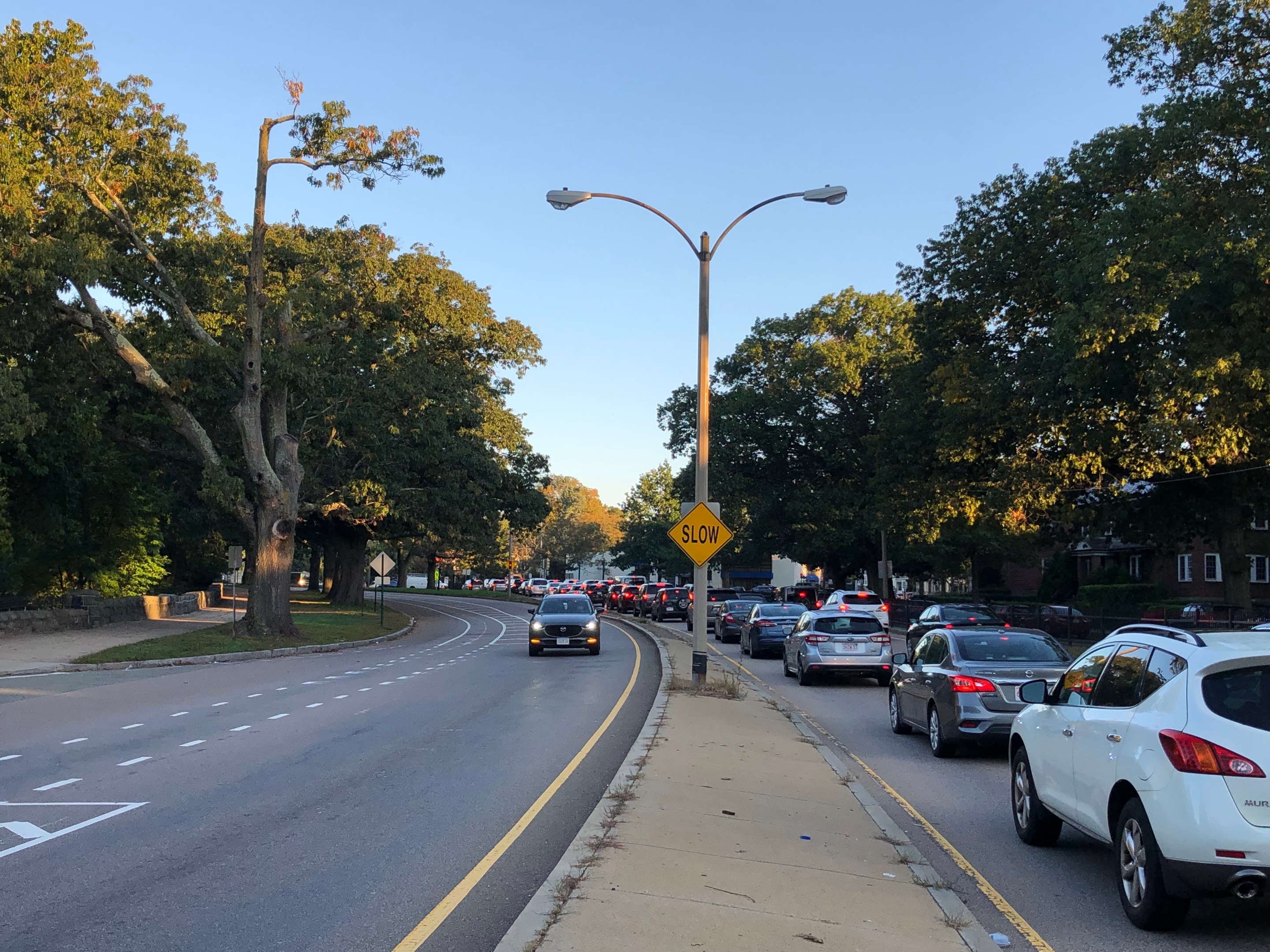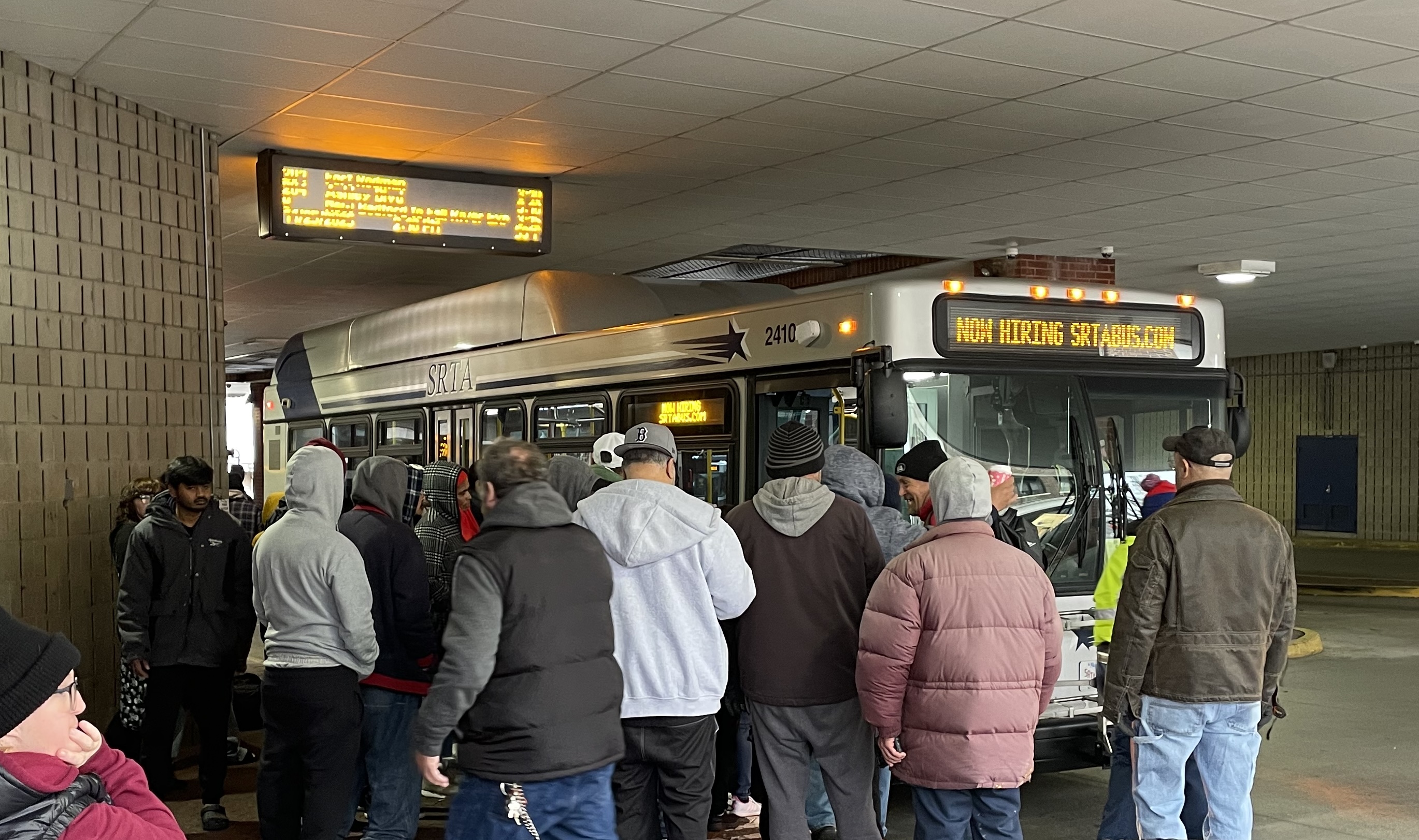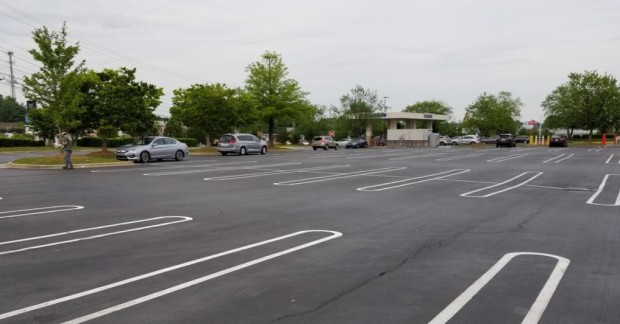This week, the Department of Conservation and Recreation (DCR), an agency that's responsible for a considerable amount of the Boston region's traffic pollution, will re-stripe the Arborway roadway near the Arnold Arboretum to add another lane for motor vehicle traffic where there is currently a wide, buffered bike lane (pictured above).
In a press advisory issued Monday evening, DCR announced that it is re-striping the Arborway between Murray Circle (the rotary where the Arborway meets Centre Street) and the Arboretum entrance driveway to "create another lane of traffic and alleviate congestion within the rotary and on surrounding streets."
It's not clear exactly what DCR's plans are, but the addition of a second lane would partially undo a roadway re-striping project that was implemented in 2020 with the aim of reducing conflicts and crashes in and near Murray Circle.
At the time, Jeffrey Parenti, DCR’s Deputy Chief Engineer, wrote that consolidating southbound traffic from the traffic circle towards Forest Hills in a single lane would "better organize movements approaching and within (the traffic circle)" and therefore "will result in less confusion and fewer crashes."
According to MassDOT traffic volume data and Environmental Protection Agency emissions rates, the 49,000 passenger vehicles that travel on the 0.4-mile segment of the Arborway between Murray and Kelley Circles generate about 7.5 metric tons of greenhouse gas pollution every single day, plus an additional 125 kilograms of toxic air pollutants like carbon monoxide and fine particulates.
After receiving considerable backlash from local elected officials and on social media on Tuesday, a DCR spokesperson added some clarification.
“DCR is adding a temporary car lane to a small portion of the Arborway while maintaining an on-road bike lane for cyclists," wrote a DCR spokesperson in an email to StreetsblogMASS. "This temporary lane is intended to address local concerns about traffic as DCR continues to work with the community and stakeholders on the Arborway Improvement Project."
However, the spokesperson declined to share more detailed plans for the re-striping project, and neighbors strongly suspect that adding a lane for cars will necessarily reduce the amount of protective buffering space between bike traffic and the Arborway's aggressive drivers.
DCR's spokesperson also declined to answer our question about why the agency believes it can "alleviate congestion" by subsidizing suburban car traffic at the expense of public green space and park access.
"The Boston Cyclists Union, like everyone else, was caught off guard by the DCR's surprise announcement this morning," wrote Boston Cyclists Union Mandy Wilkins in an email to StreetsblogMASS on Tuesday. "In 2017 & 2018, before the buffered bike lane, there was an average of one crash every 5 days on the Arborway. An extra lane of traffic will not alleviate congestion, but it will risk lives. We should be moving forward, not backwards with our plans."
DCR has been working on plans for a large-scale reconstruction of the Arborway between Jamaica Pond and Forest Hills, but after several years' worth of meetings the project still has yet to begin construction and there have been no public updates on the effort since the end of 2022.






